Top #10 Most Beautiful Cities in Argentina | Best Cities To Visit in Argentina

- By
- Aparna Patel
- |
- 19 May, 2023
- |
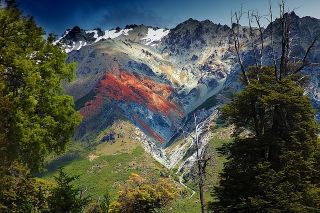
If you are planning to visit Argentina and you want to know about the list of famous cities in country to visit then you have come to the right place.we have listed the major cities in Argentina to visit.
Leafy tree-lined bouquets and delightful colonial architecture give way to a wealth of restaurants, museums, bars, and more Argentine cities that are full of life and action.
Argentina is a beautiful country, one of the largest countries in South America and some of the most visited tourist places in the world. Home to colorful culture, home of tango, delicious food, Andes, famous wine, and all kinds of magical landscapes- Argentina is an enjoyable destination!
Argentina has plenty of places to roam that can be natural or man-made this is the complete package, with the highest of mountains for the hugest beaches that give travelers what they enjoy.
The popular cities of Argentina attract a wide variety of attractions, from the spectacular cascades of Iguazu Falls to this South American gem to see business and leisure travelers apart from sports activities, traditions, spectacular scenery, and attractions.
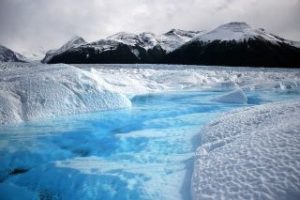
Every nook and corner of Argentina is worth seeing, bright, adventurous, and magnificent, Argentina lures in its energetic cities, wildlife and with its vast selection of natural wonders. Along with the deserts, lakes, and shorelines, numerous cafes and roadside hangouts provide stunning cosmopolitan creativity.
With the bustling European-style streets of Buenos Aires, the surrounding areas are ideal for hiking. Apart from its many attractions, other big draws are the natural wonders of the country you have, unique opportunities to explore the dramatic scenery in Argentina, and in doing so, will fall in love with this incredible land and people.
Whether it is football or an insight into the country’s unique cultural heritage, or visiting Golfo Nuevo provides an unusual opportunity to see the southern right whale.
If you are interested in 17th-century architecture, there is the city of Cordoba with its selection of Spanish architecture, and Mendoza is, located in the wine region of Argentina. With its unusual “Barrios,” colorful arts neighborhoods like La Boca, and fashionable districts like Palermo, Buenos Aires boasts a distinct European experience. It’s the best place to start exploring (it’s also the best place to learn the tango), Which is the most romantic Argentine dance).
Argentina is one of the top destinations for tourists it is what you are looking for near Bariloche for its picturesque scenery and outdoor activities. The scenery Argentina is entirely beautiful and majestic, it hosts some of the biggest waterfalls and mountains in the whole of America, the breathtaking Iguazu Falls, is the biggest waterfall in the world. The best cities in Argentina offer all and more 10 best places to travel in Argentina.
- Best Time to Visit Argentina: Springtime (October to mid-December) | Autumn (April to mid-June)
- High Tourist Season: October to mid-December | April to mid-June
- Low Season: June | August
Best Cities in Argentina To Visit
1.Buenos Aires – The City of Barriers
The capital of the country, Buenos Aires is, an intoxicating city known as the “Paris of South America” that meets grit, with its vast diversity and beautiful neighborhood and Spanish and Italian influences that make this city the heart of Argentina Attracts. Buenos Aires is buzzing and, 2020 is, set to begin.
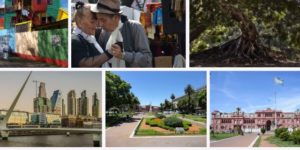
It brings together the elegant and energetic, sophisticated, and burning city we know today to see as European and Latin influences.
One of the most attractive, cities Buenos Aires is often the first glimpse of Argentina that most visitors will have before heading to popular tourist destinations like Patagonia. At the other end of the spectrum is, Buenos Aires which is a bustling metropolis with a cosmopolitan vibe, a must-see in this sophisticated city including sightseeing and nightlife, – erotic tango dancing.
That is a great place to get into fine street food and the complete happy mood to see a fascinating street museum in the rainbow-hued Caminito, and of course, the famous football stadium La Bombonera.
There are lots of sites to visit in Buenos Aires, Argentina. Visit the delightful Plaza de Mayo in the city core for a historical view of Buenos Aires, where Argentina declared independence from Spanish colonial rule in 1810. We recommend the four-day Buenos Aires City Package to get a taste of Buenos Aires.
That is a great option for those who like to hang out and have a superb meal. There is, so much to see, and do in that vibrant city that you can spend the entire holiday in Buenos Aires alone making world-class museums and Rio de la Plata the vigorous cultural capital of Argentina, and the pounding nightclubs only in the fun and festivities on offer add up.
Read also – 2020 Top Beautiful cities in Afghanistan
One of the largest cities, in Latin America, that vibrant metropolitan city is, made up of several districts called Baria. Visit Tetro Cologne, considered one of the most important opera houses in the world, in addition to some of the most visited locations in these barrios, including Eva Perón, including Microcentro where The Obelisco is, located.
One of the most bustling cities in Buenos Aires, shop at San Telmo Market (famous, for its flea markets) for antiques, curios and vintage clothing, featuring handicrafts, folk dances and live music Head to Ferra de Matadero for a complete cultural experience.
If you like books, make sure to get converted by Ateneo Grand Splendid, a converted theater that is, considered one of the most elegant and beautiful bookshops in the world while the multicolored architecture of La Boca makes it a world-famous district.
Walk among the famous dead at the Cimentamentio de La Recoleta – considered one of the top ten most beautiful cemeteries in the world – and stand in the square that bears witness to much of the city’s historic past. Be sure to visit Barrios, the most vivid neighborhood in, Buenos Aires and known for its spectacular walk zones and open-air museums, which are popular for their brightly colored homes, sculptures, and outdoor tango lessons.
There are many enjoyable places to visit in Buenos Aires. It is also home to Casa Rosada (or Pink House), where Evita once spoke to her balcony.
At the turn of the 20th century, many European immigrants arrived here, who still define the aesthetics of the city to the day, as a result, modern-day, Buenos Aires is a playground for the Bohemian culture vulture.
Tumbling buildings reflect its bouquet, a very walkable city, a seven-line metro, and an efficient bus system that makes it easy to get around. As a result, an enormous contingent of foreign ex-pats call the capital home, the list of Argentina’s top cities would be incomplete without Buenos Aires at the time.
Buenos Aires Famous for: Erotic Tango Dancing | Sightseeing | Nightlife | Museums | Urban Parks | Festivals | San Telmo market
Places To Visit: La Boca | Recoleta Cemetery | Plaza de Mayo | Casa Rosada
Best time to visit: April-June (fall) | September-December (spring)
Watch Argentina Hd video:
2.Mendoza
Located in Latin America’s largest wine-producing region, known worldwide for its delicious wines and beautiful vineyards, Mendoza is a haven for outdoor lovers and food alike. Due to the capital, Mendoza is one of Argentina’s top cities Oenophiles – This province located under the Andes, surrounded by Mendoza’s views, is perfect for hiking, white water rafting on the picturesque river and soaring on the zip line.
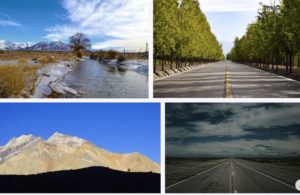
Mendoza is a famous tourist destination not only for its wines but also for its proximity to Aconcagua, America’s highest mountain which is 22,837 feet (6,961 m) high and only the second in size of Mount Everest, in the Cuyo Desert west of Argentina On the area there is Mendoza.
Mendoza is excellent for walking around leafy tree roads and beautiful intersections and giving it a laid-back vibe. Also, Mendoza offers scenic views and outdoor adventures such as hiking, horse riding, river rafting, and more.
Mendoza, is Argentina’s premier wine-terracing terroir, meaning that an inexpensive bottle of top-shelf vino is always within arm’s reach, Mendoza is world-renowned for its red wines, especially Malbecs, and many local some wineries offer tastings and tours.
After a devastating earthquake in the late nineteenth century the city, was littered with broad streets that survived some of the numerous old historic buildings today and can be seen, around the city and the streets are busy during the day, Mendoza becomes, alive at night as restaurants and bars are packed.
It is a popular tourist destination for wine connoisseurs and climbers, Mendoza has an extensive artificial spraying system that allows greenery to flourish throughout the city.
Argentine wines, in particular, a surfeit of grapes for winemaking, bustling with Mendoza climbers, cosmopolitan cafes, leafy sidewalks, generous plazas and long stretches of pavements, Mendoza is a vigorous ready for all travelers to spend a night Apart from that the city is not only a lot for tourists like hikers, skiers, rafters, bikers, paragliders, naturalists, trekkers Number is an all-seasons destination for Onofails.
If you are a nature lover then in the city you will find tree-lined walkways, fountains-decorated strips and bustling nights and the center has its central square, the Independence Plaza, surrounded by shops, museums, and beautiful buildings.
Which are illuminated at night? Mendoza is surrounded by exquisite scenery and gives itself to outside activities such as river rafting and horse riding. If you are a lover of music, it is also home to the underground Museum of the Museum (Museo Municipal de Arte Moderno).
The city is exceptionally beautiful every corner of the city can be, Instagrammed which makes it a top destination for travel to Argentina. Mendoza is known for the Harvest Festival that begins in 1936, and watches the parade, tasting locally produced wine, and participating in a week-long program of festivities and events.
If you are looking for a relaxing holiday in Mendoza, you can enjoy unusual wine tours and rejuvenating spa trips while exploring the Andes abound for business and teaching opportunities for those who are willing to try. The car journey is only a short distance away.
Mendoza Famous for: Tree-lined Streets | Sunny Climate | Malbec Wine | World-Class Restaurants | Spas
Places To Visit: General San Martín Park | Bodega Los Toneles | Bodegas CARO SA | Bodega Escorihuela Gascón
Best time to visit: October-November | March-April
3.Ushuaia
The city of Ushuaia tourist resort has been nicknamed the “End of the World” because of its geographical location at the tip of Argentina, located on the Tierra Del Fuego archipelago at the southernmost tip of South America, a steep stretch between the Ushuaia Marshall Mountains and the Beagle Channel Sits on the hill.

If you’re planning to visit Ushuaia, here is some information that might be helpful:
- Getting there: The most common way to reach Ushuaia is by air. The Ushuaia-Malvinas Argentinas International Airport (USH) serves both domestic and international flights. You can also reach Ushuaia by taking a cruise ship or ferry from other locations in Argentina or neighboring countries.
- Climate: Ushuaia has a subpolar oceanic climate, which means it has cool summers and cold winters. The average temperature in summer (December to February) ranges from 5°C to 15°C (41°F to 59°F), while in winter (June to August), temperatures can drop below freezing, averaging around -1°C to 4°C (30°F to 39°F). It’s essential to pack warm clothing regardless of the time of year.
- Attractions: Ushuaia offers stunning natural beauty and various attractions. Some popular places to visit include Tierra del Fuego National Park, where you can enjoy hiking trails, lakes, and panoramic views. The End of the World Train (Tren del Fin del Mundo) is a tourist train that takes you through the Tierra del Fuego National Park. You can also explore the Beagle Channel by boat, visit the Les Eclaireurs Lighthouse, or take a penguin-watching excursion on Martillo Island.
- Adventure activities: Ushuaia is known for its adventure tourism. You can go hiking, trekking, or take part in ice climbing and glacier walks in the surrounding mountains and glaciers. Skiing and snowboarding are popular during the winter season at the nearby Cerro Castor ski resort. Additionally, you can try kayaking, sailing, or fishing in the Beagle Channel.
- Wildlife: Ushuaia is home to diverse wildlife. In addition to penguins, you might spot sea lions, seals, orcas, and various bird species in the Beagle Channel. If you’re lucky, you might even catch a glimpse of whales during the whale-watching season (June to December).
- Local culture and cuisine: Ushuaia has a unique blend of Argentine and indigenous cultures. You can explore the city’s history at the Maritime Museum or the Prison Museum, which was formerly a prison. Don’t forget to try the local cuisine, which often includes delicious seafood like king crab and fish dishes.
- Safety: Ushuaia is generally a safe city for tourists. However, it’s always advisable to take standard precautions, such as keeping an eye on your belongings and being aware of your surroundings.
4.Puerto Madryn
Puerto Madryn is a wonder, best known as the gateway to the peninsula valleys that lie on the Golfo Nuevo Most people travel for the wealth of marine wealth that lies nearby.
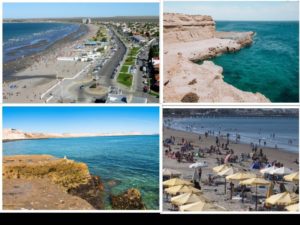
The beautiful beaches of Puerto Madryn make it a pleasant place to spend some time while tourism has increased with the development of a shopping mall, and other attractions but its greatest attraction is that it is the closest town to the peninsula Valdes which is magical A beautiful coast full of sights to see on your Argentina trip.
Here’s a travel guide to help you plan your visit to Puerto Madryn:
- Getting There: The most common way to reach Puerto Madryn is by air. The city has its own airport, El Tehuelche Airport (PMY), which receives regular flights from Buenos Aires. Alternatively, you can also reach Puerto Madryn by bus from various cities in Argentina.
- Best Time to Visit: The best time to visit Puerto Madryn is during the Southern Hemisphere summer, which is from December to February. This is when the weather is pleasant, and you can enjoy outdoor activities and wildlife sightings. However, keep in mind that this is also the peak tourist season, so the city can be more crowded. Spring (September to November) and autumn (March to May) are also good times to visit with milder temperatures and fewer tourists.
- Things to Do:
- Peninsula Valdes: A UNESCO World Heritage Site, Peninsula Valdes is a must-visit attraction near Puerto Madryn. It’s a wildlife haven where you can spot southern right whales, Magellanic penguins, elephant seals, sea lions, and orcas.
- Whale Watching: Puerto Madryn is known as one of the best places in the world for whale watching. Take a boat tour from the city and get a chance to see the magnificent southern right whales that migrate to these waters.
- Punta Tombo: Located south of Puerto Madryn, Punta Tombo is the largest Magellanic penguin colony in South America. You can walk among thousands of penguins and observe their behavior up close.
- Scuba Diving and Snorkeling: Explore the underwater world of Puerto Madryn by engaging in scuba diving or snorkeling. The clear waters are home to a variety of marine life, including colorful fish, sea turtles, and even dolphins.
- Beach Relaxation: Puerto Madryn offers several beautiful beaches where you can relax, swim, or sunbathe. Playa Paraná and Playa El Doradillo are popular choices.
- Food and Dining: When it comes to food, Puerto Madryn is known for its delicious seafood. Make sure to try traditional Argentine dishes like paella, seafood empanadas, and fresh fish. There are various restaurants and seafood shacks along the coastal areas where you can savor these delicacies.
- Accommodation: Puerto Madryn offers a range of accommodation options to suit different budgets. You can find hotels, guesthouses, and vacation rentals in the city center and along the coastline. It’s advisable to book in advance, especially during the peak season.
- Safety: Puerto Madryn is generally a safe city for tourists. However, as with any travel destination, it’s always a good idea to take common safety precautions. Keep an eye on your belongings, avoid walking alone at night in secluded areas, and follow any local advice or guidelines.
5. Salta – Gauchos of the North
Salta – Nicknamed ‘Salta Fairal‘ the city lives up to its title due to its sophisticated museums, lovely architecture, and beautiful setting, and is a very famous city to visit.
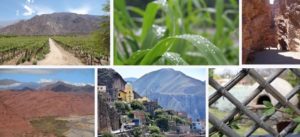
Located 1,500 kilometers from Buenos Aires, Salta and Jujuy are Argentina’s most northeastern provinces that want to experience the peaks of Patagonia, the city of Salta presents a different side of Argentina. The flourishing indigenous culture and rural outlook make the region an authentic testimonial to the state of Argentina before Spanish colonization.
Some information that might be helpful:
- Getting there: The most common way to reach Salta is by air. The Martín Miguel de Güemes International Airport (SLA) serves both domestic and international flights. You can also reach Salta by bus from various cities in Argentina or neighboring countries.
- Climate: Salta has a subtropical highland climate, characterized by mild to hot summers and mild winters. The average temperature in summer (December to February) ranges from 20°C to 30°C (68°F to 86°F), while in winter (June to August), temperatures average around 5°C to 20°C (41°F to 68°F). The climate in the surrounding valleys and mountains can vary, so it’s advisable to pack accordingly.
- Attractions: Salta offers a mix of natural beauty, historical sites, and cultural experiences. The city itself boasts well-preserved colonial architecture, such as the Salta Cathedral and the San Francisco Church. The MAAM (Museum of High Altitude Archaeology) is a must-visit for its collection of Inca artifacts. You can also explore the colorful San Lorenzo Market, visit the San Bernardo Hill for panoramic views of the city, or take a walk in the beautiful San Martín Park.
- Quebrada de Humahuaca: A popular excursion from Salta is a visit to the Quebrada de Humahuaca. This UNESCO World Heritage site offers stunning landscapes, including colorful rock formations and dramatic gorges. You can explore the towns of Purmamarca, Tilcara, and Humahuaca, each with its own charm and indigenous influence.
- Cafayate: Another highlight of the region is the town of Cafayate, known for its vineyards and wineries. Located in the Calchaquí Valleys, Cafayate offers a scenic drive through beautiful landscapes. You can take a wine tour, sample the famous Torrontés wine, and visit the impressive rock formations of the Quebrada de las Conchas.
- Outdoor activities: Salta is surrounded by natural beauty, making it ideal for outdoor enthusiasts. You can go hiking in the nearby national parks, such as the Los Cardones National Park or the El Rey National Park. Rafting, mountain biking, and horseback riding are also popular activities in the area.
- Local cuisine: Salta is known for its delicious regional cuisine. Be sure to try empanadas salteñas (a type of savory pastry filled with meat or cheese), locro (a hearty stew made with corn, beans, and meat), and humitas (similar to tamales). Salta is also famous for its traditional folk music and dance, so you might have the chance to experience live performances.
6.Cordoba
Situated 700 kilometers northwest of Buenos Aires with an intriguing mix of traditional and contemporary influences, Córdoba has a different personality than the city of its sister Buenos Aires.
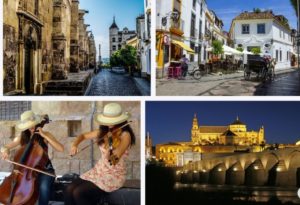
The city is a fusion of 17th-century Jesuit colonial architecture with modern art galleries, and new design and includes the Collegio National de Monserrat campus, not only for its concentration of Cordoba Spanish colonial buildings surrounded by picturesque valleys and mountains.
Here’s some travel information to help you plan your visit to Cordoba:
- Getting There: The easiest way to reach Cordoba is by air. The city has its own international airport, Ingeniero Aeronáutico Ambrosio L.V. Taravella International Airport (COR), which receives flights from major cities in Argentina and some international destinations. You can also reach Cordoba by bus from various cities in Argentina.
- Best Time to Visit: Cordoba has a moderate climate, with hot summers and mild winters. The best time to visit is during the spring (September to November) and autumn (March to May) when temperatures are pleasant. However, if you enjoy vibrant festivals and cultural events, you might consider visiting during February for the Carnival celebrations.
- Things to Do:
- Historic Center: Explore Cordoba’s historic center, which is a UNESCO World Heritage Site. Visit the iconic Plaza San Martin, the Jesuit Block (Manzana Jesuítica), and the Cordoba Cathedral. You can also admire the architecture of the colonial buildings and visit museums like the Museo Historico Provincial Marques de Sobremonte.
- Sierras de Cordoba: Take a trip to the Sierras de Cordoba, a mountain range surrounding the city. Enjoy outdoor activities such as hiking, horseback riding, and mountain biking. Visit picturesque towns like Villa General Belgrano, La Cumbrecita, and Capilla del Monte.
- Paseo del Buen Pastor: Visit the Paseo del Buen Pastor, a cultural and commercial complex located in a former women’s prison. It offers art exhibitions, live performances, craft shops, and trendy cafes.
- Plaza España: Explore Plaza España, a beautiful square featuring a replica of the famous Cordoba Mosque-Cathedral’s Patio de los Naranjos. Enjoy the tranquil atmosphere, walk around the gardens, and visit the nearby Museo de Bellas Artes Emilio Caraffa.
- Nightlife: Cordoba has a lively nightlife scene, particularly around the area known as Güemes. Enjoy a variety of bars, restaurants, and clubs offering music, dancing, and entertainment.
- Food and Dining: Cordoba is known for its culinary delights. Don’t miss trying traditional dishes such as locro (a hearty stew), asado (barbecue), empanadas, and pastelitos. Explore the city’s restaurants and street food stalls to savor the local flavors.
- Accommodation: Cordoba offers a wide range of accommodation options, including luxury hotels, boutique hotels, hostels, and guesthouses. The city center and Nueva Cordoba neighborhood are popular areas to stay due to their central location and proximity to attractions.
7. El Calafate
If you visit El Chalten, you will pass through El Calafate, part of the Patagonia region of Argentina, El Calafate rests on the southern edge of Lago Argentina in the southwestern province of Santa Cruz.
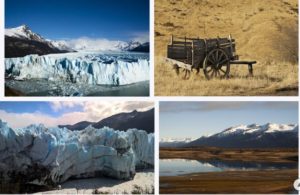
El Calafate is now an attractive tourist town establishing the nearby Los Glacier National Park. El Calafate is now an attractive tourist town establishing the nearby Los Glacier National Park.
In the afternoon, tourists are, treated to the “calm” of the glacier El Calafate serves as a starting point for many tourist excursions Of which the Puerto Moreno glacier is most popular due to its rupture and spectacular performance of ice breakage, not only that city but some of the world’s area is home to the beautiful snowy scenery and Ptaogonian plains.
Here are some travel tips to make your visit more enjoyable:
- Best Time to Visit: The best time to visit El Calafate is during the summer months of December to February. The weather is mild, and you’ll have longer daylight hours to explore the attractions.
- Perito Moreno Glacier: A must-see attraction in El Calafate is the Perito Moreno Glacier, a massive glacier that offers breathtaking views. Take a boat tour or walk along the designated trails to get up close to the glacier’s impressive walls and witness occasional calving events.
- Glacier Excursions: Apart from Perito Moreno Glacier, consider taking excursions to other nearby glaciers like Upsala, Spegazzini, and Onelli. These trips often include boat rides and guided tours, providing an opportunity to explore the diverse glacial landscapes.
- Dress Appropriately: El Calafate experiences changeable weather, even in the summer. Pack layers of clothing to accommodate temperature fluctuations and wear comfortable, waterproof shoes for walking on uneven terrain.
- Cash and Currency: While most places accept credit cards, it’s a good idea to carry some cash, especially for smaller establishments. The local currency in Argentina is the Argentine Peso (ARS), so make sure to have some pesos with you.
- Language: Spanish is the official language in Argentina, including El Calafate. Though many tourist establishments have English-speaking staff, it’s helpful to know some basic Spanish phrases or carry a translation app.
- Safety Precautions: El Calafate is generally a safe destination, but it’s always wise to take precautions. Be aware of your surroundings, avoid displaying valuable items, and use reliable transportation services.
- Wildlife Spotting: El Calafate is home to various wildlife species, including guanacos, flamingos, and condors. Keep your camera ready and maintain a safe distance while observing these animals in their natural habitats.
- Torres del Paine National Park: If you have extra time, consider a day trip to Torres del Paine National Park in neighboring Chile. This park is known for its awe-inspiring mountains, pristine lakes, and diverse wildlife.
- Travel Insurance: As with any trip, it’s advisable to have travel insurance that covers medical emergencies, trip cancellations, and lost or stolen belongings. Check with your insurance provider to ensure you have adequate coverage.
8. Bariloche- San Carlos de Bariloche
Bariloche is one of the most popular destinations across the country, a chocolate hub for chocolate lovers, craft beers, Swiss-style architecture, crystal blue lakes, and snow-capped mountains are just a few of the things that attract tourists to Bariloche.
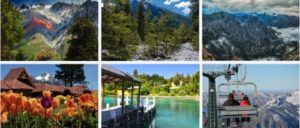
San Carlos de Bariloche looks like a village in Switzerland, commonly known as, Bariloche while being a major all-season destination in Patagonia, Argentina. Instead, it is an enchanting city in the Rio Negro province of Argentina, the magnificent city reviews most of the ski slopes in the world as well as offers an abundance of outdoor activities.
Nestled in the Andes Mountains and surrounded by lakes, forests, and snow-capped peaks, Bariloche is a popular tourist destination throughout the year. Known for its stunning natural beauty, outdoor activities, and Swiss-style architecture, it offers a wide range of attractions for visitors to enjoy. Here is a travel guide to help you plan your visit to Bariloche:
- Getting There:
- By Air: Bariloche has its own international airport, San Carlos de Bariloche Airport (BRC), which receives flights from major cities in Argentina and some international destinations.
- By Bus: Regular bus services operate between Bariloche and various cities in Argentina and neighboring countries.
- Climate:
- Bariloche experiences a temperate climate with mild summers (December to February) and cold winters (June to August).
- The weather can be unpredictable, so it’s advisable to pack layers and be prepared for temperature variations.
- Things to Do:
- Nahuel Huapi Lake: This large glacial lake offers breathtaking views and various recreational activities such as boating, kayaking, and fishing.
- Cerro Catedral: A renowned ski resort with numerous slopes and trails for skiing and snowboarding during the winter months.
- Circuito Chico: A scenic road trip around the outskirts of Bariloche, offering stunning vistas of the surrounding mountains, lakes, and forests.
- Isla Victoria and Bosque de Arrayanes: Take a boat tour to Isla Victoria, known for its ancient cypress trees, and visit the unique Bosque de Arrayanes (arrayán forest).
- Puerto Blest and Cascada de los Cántaros: Explore the enchanting Puerto Blest, take a boat ride on Lake Nahuel Huapi, and hike to Cascada de los Cántaros waterfall.
- Chocolate Shops: Bariloche is famous for its chocolate production, so be sure to visit some of the local chocolate shops and indulge in delicious treats.
- Outdoor Activities:
- Hiking: There are numerous hiking trails in the area, ranging from easy walks to more challenging treks, offering stunning views of the mountains, lakes, and forests.
- Mountain Biking: The region has excellent mountain biking trails, catering to different skill levels.
- Fishing: Bariloche is a paradise for anglers, with opportunities for fly fishing in the crystal-clear lakes and rivers.
- Rafting and Kayaking: Enjoy the thrill of whitewater rafting or kayaking in the rivers and rapids surrounding Bariloche.
- Cerro Otto:
- Take a cable car ride up Cerro Otto for panoramic views of Bariloche and the surrounding landscapes. At the top, you’ll find a revolving restaurant and a small art gallery.
- Swiss Colony:
- Visit Colonia Suiza, a Swiss-style village near Bariloche, famous for its traditional crafts, food, and lively Sunday market.
- Local Cuisine:
- Don’t miss trying traditional Argentine dishes such as asado (barbecue), empanadas, and regional specialties like trucha (trout) and cordero (lamb).
- Bariloche is also known for its excellent craft beer, so be sure to visit some local breweries.
- Safety:
- Bariloche is generally a safe destination, but it’s always advisable to take basic precautions like avoiding isolated areas at night and keeping an eye on your belongings.
9. Puerto Iguazu
The city on the Argentine side is called Puerto Iguazu and is small and beautiful, not just that, situated on the division of the Argentine province of Misiones, and the Brazilian state of Parana, Iguazu Falls are surrounded by the noise of South American rainforests and wildlife.
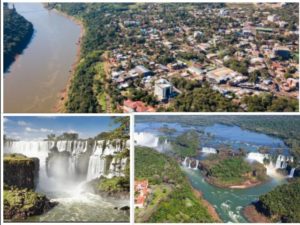
Over a million tourists stop here every year to admire the natural spectacle, making it one of the top Argentine tourist attractions, it also offers some of the best hostels, top-end hotels, and spas in Argentina.
Iguazu is, made up of between 150 and 300 individuals on a three-kilometer shoreline, a number that varies depending on the season, you have to catch a flight from Buenos Aires or cross the border from Brazil.
One of the most astonishing natural wonders in the world spread, 2.7 kilometers wide with 275 waterfalls at its disposal, Iguazu Falls is reputed as one of the most visited places in the world. It has made travelers all witness and experiences the cascade in person, this unusual UNESCO World Heritage Site combining incredible wilderness flora and fauna with the vast complex of waterfalls.
Visitors with Iguazu National Park on the shores of Iguazu Falls, Argentina and Iguaçu National Park on the Brazilian side can get quite close to these thundering falls the falls are, divided into sections of Brazil and Argentina both breathtaking in their way making the world The biggest is the water system the park has many great walking routes while boat rides are available that allow people to get wet with spray Sector takes over.
One of the most beautiful places in the world, Iguazu Falls is a must-have on every traveler’s bucket list, with many Iguazu tours available that allow you to experience both Argentine and Brazilian beautiful falls (but don’t forget to bring a visa).
Iguazu Falls Famous for: World Famous Waterfalls | Incredible Culture | Gorgeous Beaches | Spectacular Views | Beauty
Places To Visit: Devil’s Throat | Iguazú National Park | Iguazu Falls | Foz de Iguazu |Guira Oga Wildlife Center |Hummingbird Garden
Best time to visit: July to October | February to April
10. Mar del Plata
Nicknamed ‘The happy city‘ Mar del Plata is a famous beach resort town among Argentina’s most famous beach city of Argentina in 2020 which, should be on your list.
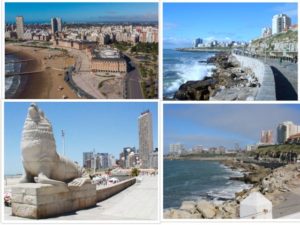
Some of the best beaches in South America are in the relatively modern city of Mar del Plata on the Atlantic coast, 400 kilometers from Buenos Aires, and such beaches are, completely packed, in high season around January and February.
Mar del Plata is a vibrant coastal city located in the province of Buenos Aires, Argentina. Known for its beautiful beaches, lively atmosphere, and wide range of attractions, Mar del Plata is a popular vacation destination for both locals and international visitors. Here’s a travel guide to help you plan your trip to Mar del Plata:
- Getting There:
- By Air: The city has its own airport, Astor Piazzolla International Airport (MDQ), which receives domestic flights from major cities in Argentina.
- By Bus: Regular bus services operate between Mar del Plata and Buenos Aires, as well as other cities in Argentina.
- Climate:
- Mar del Plata has a temperate oceanic climate with mild summers (December to February) and cool winters (June to August).
- The weather can be changeable, so it’s advisable to pack layers and be prepared for temperature variations.
- Beaches:
- Playa Bristol: The main beach of Mar del Plata, located in the city center. It offers a lively atmosphere with numerous beach bars, restaurants, and activities.
- Playa Grande: A popular beach known for its wide sandy shores and beautiful waterfront houses.
- Playa Varese: A more relaxed beach with a laid-back vibe, popular among surfers and sunbathers.
- Punta Mogotes: A family-friendly beach area with calm waters, playgrounds, and picnic spots.
- Attractions:
- Casino Central: Located on the seafront, this iconic casino is a major attraction in Mar del Plata. It offers gambling facilities, live entertainment, and a glamorous ambiance.
- Mar del Plata Aquarium: Home to a variety of marine species, including dolphins, penguins, and sea lions. Visitors can enjoy shows and interactive experiences.
- Museo del Mar: A maritime museum featuring an extensive collection of seashells, marine artifacts, and historic exhibits.
- Torreón del Monje: A historic landmark and viewpoint offering panoramic views of the coastline and the city.
- Sierra de los Padres: A nearby hill range with scenic landscapes, hiking trails, and opportunities for outdoor activities.
- Water Sports and Activities:
- Surfing: Mar del Plata is known for its surfing spots, with Playa Varese and Playa Grande being popular among surfers.
- Sailing and Windsurfing: The city’s coastal location makes it a great place for sailing and windsurfing enthusiasts.
- Fishing: Try your hand at deep-sea fishing or join a fishing charter to experience the region’s abundant marine life.
- Gastronomy:
- Mar del Plata offers a wide range of dining options, including seafood restaurants, parrillas (grill houses), and traditional Argentine cuisine.
- Don’t miss trying local specialties like fresh seafood, including fish and shellfish.
- Nightlife:
- Mar del Plata boasts a vibrant nightlife scene, with numerous bars, nightclubs, and live music venues. The city comes alive during the summer months.
- Cultural Events:
- Mar del Plata hosts several cultural events and festivals throughout the year, including the Mar del Plata International Film Festival, which is one of the most important film festivals in Latin America.
Find Argentina on Google Map
Which one is the best city in Argentina and why?
Please leave a comment down.
Happy Traveling
Search Posts
Latest posts
-
4 Mar, 2024
How can I do a "broad" search for flights?
-
4 Mar, 2024
How to make dining alone less awkward?
-
5 Mar, 2024
Passing through airport security with autism
Popular posts
-
5 Mar, 2024
Why prohibit engine braking?
-
5 Mar, 2024
How to avoid drinking vodka?